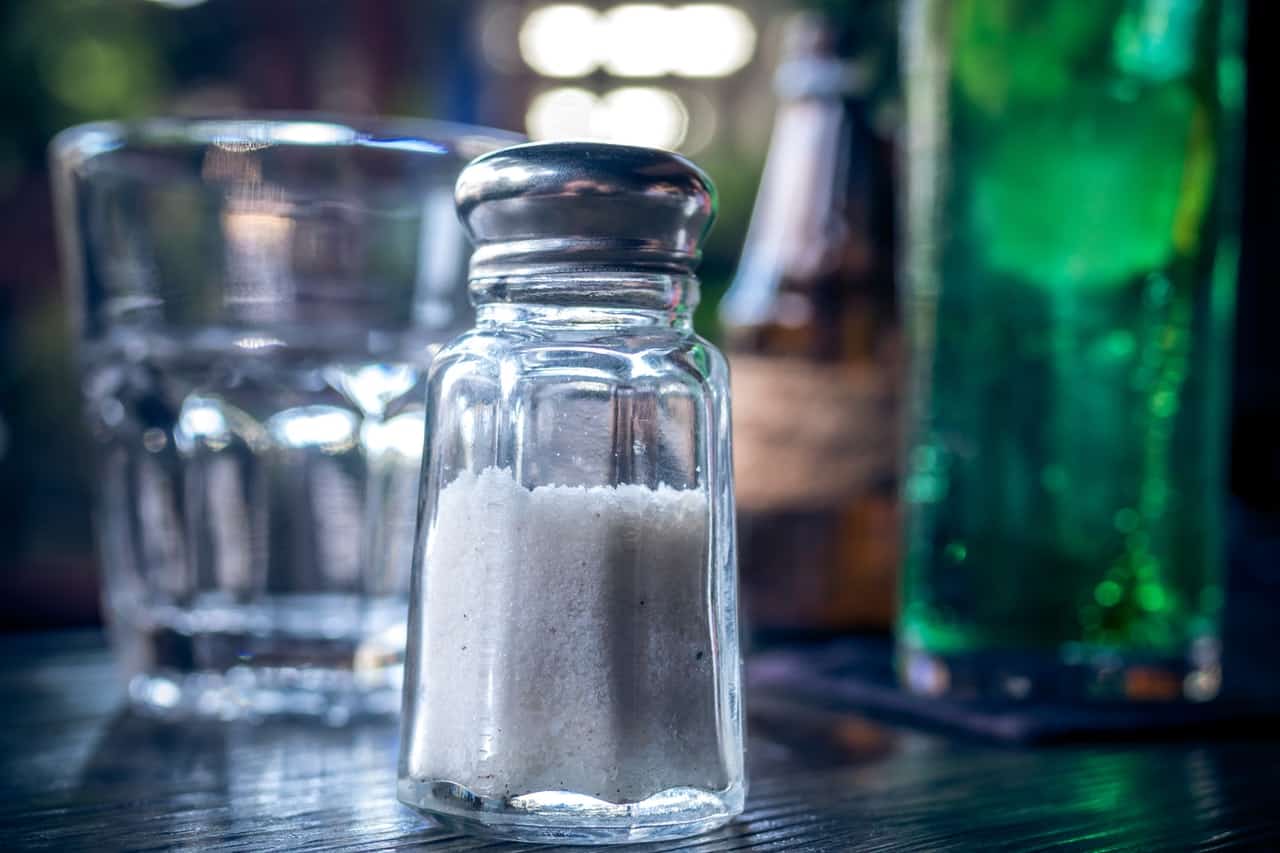We have all heard it: that general advice that you should reduce your sodium intake. More and more food labels are reading ‘low’ or ‘reduced sodium.’ We thought we’d share some information on why this piece of advice is out there (for those who haven’t had “the talk” with your doc).
First, a little data for perspective: The American Heart Association collected information throughout the United States and from 2007 to 2010, they found 33% of adults have hypertension. For reference, that’s 78 million people!
Salt and Health
Why we need salt:
Salt (sodium and chloride together) is an essential electrolyte for cellular function. It helps to regulate the balance of fluids, transmission of nerve impulses, and blood pressure.
What happens when we have too much:
The American Heart Association recommends no more than 2.300 mg/day (2.3 grams or about a teaspoon; this information changes from source to source). The AHA also only recommends 1,500 mg/day for at-risk populations, which includes African Americans, adults age 51 and above, and individuals with hypertension, diabetes, or chronic kidney disease. Studies show the average American consumes upwards of 3,400 mg every day. When the body has an excess of sodium, it can lead to fluid retention and hypertension, which can lead to other health issues.
Salt and Weight Loss
It was believed for a long time that salty foods make us thirsty; however, recent studies have challenged this notion. These studies show that a diet with higher salt intake will increase hunger rather than thirst. Data showed that people who eat high amounts of salt will actually drink less water than others who take in lesser amounts of salt; they will also become hungrier! This could be an influencer in having a higher caloric intake or, at least, just feeling more hungry than you think you should. The boost in appetite, over the long term, can lead to weight gain by overeating.
Where excess salt comes from:
Salt won’t stop your weight loss by simply adding some to your salmon. It’s not often that it is salt from cooking that leads to excess (unless you are all about the salt and add a bunch to everything). So where does the excess typically come from? Processed foods and restaurant food. USDA Dietary Guidelines estimates approximately 75% of sodium intake comes from processed foods and products that are ready-to-eat; 12% from existing sodium in natural foods; 6% from added salt when dining; 5% from salt added when cooking.
How to reduce your salt intake
- Read dem labels! Sodium content is on every food label.
- Opt for the low or reduced sodium when buying items at the grocery store.
- Reduce the amount of condiments used; like salad dressings, ketchup, and soy sauce.
- Try your food before adding salt. You may not need it!
- Season your food with things like fresh or dried herbs. This will add more flavor to your food.
For more on processed foods and how they rack up the calories, check out this Noom article!
Real results with a personalized weight loss program
Take the quiz!

Author: Christine Mangum
References
Fouladkhah A, Berlin D, Bruntz D. High-Sodium Processed Foods: Public Health Burden and Sodium Reduction Strategies for Industry Practitioners. Food Reviews International. 2015;31(4):341-354. doi:10.1080/87559129.2015.1022829.
Liwei Chen, Zhenzhen Zhang, Wen Chen, Whelton PK, Appel LJ. Lower Sodium Intake and Risk of Headaches: Results From the Trial of Nonpharmacologic Interventions in the Elderly. American Journal of Public Health. 2016;106(7):1270-1275. doi:10.2105/AJPH.2016.303143.
Angell SY, Yi S, Eisenhower D, et al. Sodium Intake in a Cross-Sectional, Representative Sample of New York City Adults. American Journal of Public Health. 2014;104(12):2409-2416. doi:10.2105/AJPH.2013.301542.
Fulgoni III VL, Agarwal S, Spence L, Samuel P. Sodium intake in US ethnic subgroups and potential impact of a new sodium reduction technology: NHANES Dietary Modeling. Nutrition Journal. 2014;13:121-138. doi:10.1186/1475-2891-13-120.
Rakova, N., Kitada, K., Lerchl, K., Dahlmann, A., Birukov, A., Daub, S., . . . Titze, J. (2017). Increased salt consumption induces body water conservation and decreases fluid intake. Journal of Clinical Investigation, 127(5), 1932-1943. doi:10.1172/jci88530 https://www.jci.org/articles/view/88530
American Heart Association: Heart Disease and Stroke Statistics—2014 Update. Circulation 2013, : . DOI: 10.1161/01.cir.0000441139.02102.80.
Sodium Chloride. https://lpi.oregonstate.edu/mic/minerals/sodium




